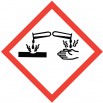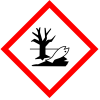SAFETY DATA SHEET P133 Mould/Bladder lubricant
Recycled rubber made using Dunlop technology and machinery
Date of Issue: 9/12/14
Date of Review: 01/07/22
Reasons for issue: Add Regulatory Information in Section 15
Download latest version of this information (01/07/22) as a .PDF document
TABLE OF CONTENTS
- IDENTIFICATION
- HAZARDS IDENTIFICATION
- COMPOSITION: Information on Ingredients
- FIRST AID MEASURES
- FIRE FIGHTING MEASURES
- ACCIDENTAL RELEASE MEASURES
- HANDLING AND STORAGE
- EXPOSURE CONTROLS: PERSONAL PROTECTION
- PHYSICAL AND CHEMICAL PROPERTIES
- STABILITY AND REACTIVITY
- TOXICOLOGICAL INFORMATION
- ECOLOGICAL INFORMATION
- DISPOSAL CONSIDERATIONS
- TRANSPORT INFORMATION
- REGULATORY INFORMATION
- OTHER INFORMATION
1. IDENTIFICATION
Product Name: P133 Mould/Bladder lubricant (Goop)
Other Names: N/A
Chemical Family: Ethoxylated alcohol
Molecular formula: N/A
Recommended Use: Apply by brush or spray to moulds and/or bladders to aid tyre release
Supplier:
Rubber Solutions Asia-Pacific Ltd
ABN: PO Box 40-604 Upper Hutt Street
Address: South Pacific Industrial Park, Railway Ave, Upper Hutt
Telephone: 64-4-5285071
Fax: 64-4-5285074
Emergency phone: 027-2274026
All other inquiries: 027-2274026
2. HAZARDS IDENTIFICATION
Product is not classified hazardous
HSNO Classifications:
none allocated
Corrosion

Environment

Signal word: Warning
Risk Phrases:
May be harmful if swallowed
- H410 Very toxic to aquatic life with long lasting effects
- HH19 May cause eye irritation
- H433 Harmful to terrestrial vertebrates
Safety Phrases:
Wash hands thoroughly after handling.
- PP66 Do not release to the environment
Dangerous Goods Classification:
n/a
3. COMPOSITION: Information on Ingredients
| Chemical Ingredient | CAS No. | Proportion (%v/v) |
|---|---|---|
| Dow Corning Additive 51 | 51 84133-50-6 | 10 |
| Water | 90 |
4. FIRST AID MEASURES
For advice, contact Poisons Information Centre (Phone: 0800 Poison 764 766) or a doctor.
Ingestion:
If swallowed, do NOT induce vomiting. Rinse out mouth thoroughly. Obtain medical attention if symptoms develop.
Eye Contact:
May cause slight irritation. Flush with water for several minutes. Obtain medical attention if symptoms develop.
Skin Contact:
Routine washing will suffice for incidental exposure. Obtain medical attention if symptoms develop. Clothing saturated with product should be removed and laundered.
Inhalation;
No vapour hazard. Heavy exposure to mists may cause irritation of the respiratory tract. Move to fresh air immediately. Assist breathing if necessary. Obtain medical attention if symptoms develop.
First Aid facilities:
Not required.
Medical Attention:
Treat according to symptoms.
5. FIRE FIGHTING MEASURES
Not normally applicable If water has evaporated, the product becomes combustible, will release oxides of carbon, nitrogen, Silica and Formaldehyde. Extinguish with dry powder or foam.
6. ACCIDENTAL RELEASE MEASURES
Emergency Procedures
Prevent fluid from escaping to drains & waterways. Contain leaking packaging in a containment drum. Ensure drain valves are closed
Methods and materials for containment
Major Land Spill
- Prevent liquid from entering sewers, watercourses, or low-lying areas
- Keep public away from the area
- Shut off the source of the spill if possible to do so
- Advise authorities if substance has entered a watercourse or sewer or has contaminated soil or vegetation
- Take measures to minimise the effect on ground water
- Contain spilled liquid with sand or earth
- Consult an expert on disposal of recovered material & ensure conformity to disposal rules
Major Water Spill
- Notify the port or relevant authority & keep public away
- Shut off the source of spill if possible & safe to do so
- Confine spill if possible
- Consult an expert on disposal & ensure conformity to local regulations of disposal
7. HANDLING AND STORAGE
Precautions tor safe handling
This product is not flammable unless water has evaporated off. Keep container closed & handle with care. To avoid slip hazard, clean up any spills immediately.
Conditions for safe storage
Store in a cool, dry place away from direct sunlight and from sources of ignition.
Incompatible materials
Strong oxidising agents
8. EXPOSURE CONTROLS: PERSONAL PROTECTION
National Exposure Standards
No occupational exposure standards are recommended by the National Occupational Health and Safety Commission (NOHSC) or other major overseas jurisdiction.
Biological limit values
None specified
Engineering Controls: Ventilation
Under normal operating conditions use in a well-ventilated area. At elevated temperatures or aerosol/spray applications, use local exhaust ventilation to remove fumes from operator’s breathing zone.
Personal Protective Equipment
Respiratory Protection:
lf an aerosol is created, then a respirator for suitable for mists should be worn. The type of respirator depends upon the level of exposure.
Eye Protection:
Safety glasses with side shields should be worn when handling. It is generally recognized that contact lenses should not be worn when working with chemicals because contact lenses may contribute to the severity of an eye injury.
Skin/Body Protection:
Wear rubber gloves for routine industrial use. Wear clothing suitable for the task. Clothing saturated with product should be removed and laundered.
9. PHYSICAL AND CHEMICAL PROPERTIES
| Property | Unit of measurement | Typical value |
|---|---|---|
| Appearance | White aqueous emulsion | |
| Boiling Point | ℃ | ~100 |
| Flash Point | ℃ | n/a |
| Density @ 15 ℃ | g/m | ~1.0 |
| Vapour Pressure @ 20 ℃ | kPa | Not available |
| Explosive Limits (LEL-UEL) | % | Not available |
| Vapour Density @ 20 ℃ | kPa | Not available |
| Autoignition Temperature | ℃ | n/a |
| Viscosity @ 20 ℃ | cSt | Similar to water |
| Percent Volatiles | % | Not available |
| Solubility with Water | %w/w | Miscible emulsion |
The values listed are indicative of this product’s physical and chemical properties. For a full product specification, please consult the Product Data Sheet.
10. STABILITY AND REACTIVITY
Chemical Stability
Non flammable unless water evaporated off.
Conditions to avoid
n/a
Hazardous decomposition products
No decomposition products except on burning. Oxides of carbon and nitrogen, formaldehyde.
Hazardous reactions
n/a
11. TOXICOLOGICAL INFORMATION
Acute Effects
Ingestion
May cause health effects in large amounts
Eye Contact
May cause irritation to the eyes and may cause eye damage with repeated or major exposure.
Skin Contact
May cause mild irritation. Repeated exposure may cause dermatitis
Inhalation
May cause irritation to respiratory tract.
Chronic Effects
Repeated or prolonged skin contact may cause allergic skin reaction. Not expected to be a sensitiser for skin or respiratory system
Other Health Effects Information
n/a
Toxicological Information
n/a
12.ECOLOGICAL INFORMATION
Eco toxicity
Aquatic Toxicity
Very toxic to aquatic life with long lasting effects. Harmful to terrestrial vertebrates. Do not allow to enter waterways, drains or sewers.
Persistence/degradability
Not biodegradable.
Mobility
Will eventually bind to soil and sediment.
13. DISPOSAL CONSIDERATIONS
Disposal Methods
Empty-packaging-to recycling, recovery or disposal through qualified contractor.
Special Precautions for Landfill or Incineration
NOT suitable for landfill.
14. TRANSPORT INFORMATION
| Road and Rail Transport | Marine Transport | Air Transport | |||
|---|---|---|---|---|---|
| UN No. | n/a | UN No. | n/a | UN No. | n/a |
| Proper Shipping Name | n/a | Proper Shipping Name | n/a | Proper Shipping Name | n/a |
| DG Class | n/a | DG Class | n/a | DG Class | n/a |
| Sub Risk | None | Sub Risk | None | Sub Risk | None |
| Pack Group | n/a | Pack Group | n/a | Pack Group | n/a |
| Hazchem | n/a | Hazchem | n/a | Hazchem | n/a |
Dangerous Goods Segregation
Not classed as dangerous goods.
15. REGULATORY INFORMATION
The regulatory information is not intended to be comprehensive. Other regulations may apply to this material.
Environmental Risk Management Authority (ERMA) Group Standard Number:Additives Process Chemicals and Raw Materials Subsidiary Hazard Group Standard2017 HSR002503
Country/Region: New Zealand
Certified Handler:Not Required
Inventory: NZCIC
Status:Listed
Poisons Schedule:None established
16. OTHER INFORMATION
Reasons for issue: Add Regulatory Information in Section 15.
Abbreviations:
- NZCIC: NZ Chemical Industry Council
- CAS Number: Chemical Abstracts Number
References:
- Supplier Material Safety Data Sheets
The information sourced for the preparation of this document was correct and complete at the time of writing to the best of the writer’s knowledge. The document represents the commitment to the company’s responsibilities surrounding the supply of this product, undertaken in good faith. This document should be taken as a safety guide for the product and its recommended uses, but is in no way an absolute authority. Please consult the relevant legislation and regulations governing the use and storage of this type of product. For further information, please contact Rubber Solutions Asia-Pacific Ltd.
